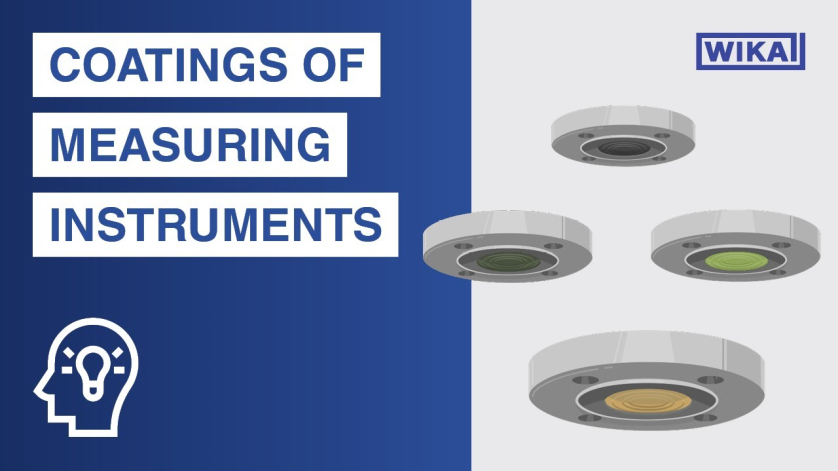
Process applications are becoming increasingly complex. Measuring instruments must therefore meet the highest requirements and function reliably – even with harsh outdoor conditions or aggressive media. Coatings are usually indispensable for use, for example, in the chemical, petrochemical, oil and gas industries or with hydrogen applications. Among other things, they help to increase product durability, performance and functionality in many industries.
What are the coatings available?
For the wetted parts of the instruments, a wide range of special materials and coatings are available for specific areas of application. These include, for example:
- Gold
- ECTFE
- Stainless steel with PFA
- Wikaramic®
When is the use of a coating recommended?
A coating is usually recommended when accurate measurement of difficult media is required. The term “difficult” medium is used, for example, to include aggressive, corrosive, abrasive, highly viscous, heterogeneous, toxic, hot or aseptic media.
What does a coating look like?
During the coating process, a thinner layer of one material is generally applied to the surface of another material. The coating can therefore also be described as a separating boundary between the construction material and the environment. This explanation can be translated to the world of measuring instruments, because usually only those parts of the measuring instruments that come into contact with the medium are coated. With diaphragm seals or diaphragm seal systems or also with process transmitters, coating of the so-called diaphragm is recommended. At WIKA, for example, the coatings are applied in nuances to conserve resources.
What are the advantages of coatings?
Coatings such as ECTFE, antistatic PFA, FDA-compliant PFA or gold are only used in the required places. This minimises costs while at the same time conserving resources.
Some coatings tolerate, for example, increased temperatures: When coated with stainless steel, gold or Wikaramic®, the upper body or the wetted parts of a diaphragm seal with flange connection (e.g. WIKA model 990.27) can be used, for example, at a maximum permissible operating temperature of 400 °C (752 °F).
Please note that the maximum permissible operating temperature of the diaphragm seal system is limited by the joining method, the system fill fluid and the measuring instrument. A diaphragm coated with ECTFE is, for example, insensitive to common acids and lyes, which is often necessary for use in the chemical or petrochemical industry, while stainless steel with antistatic PFA is resistant to chemicals and withstands high temperatures. This coating is therefore predestined for use in the oil and gas industry. The non-stick coating is also suitable for Ex applications. Wikaramic®, on the other hand, is recommended for flush-mounted diaphragm seals in the pulp and paper industry or for processes with abrasive media.
Coatings of measuring instruments Use and advantages
Digression: Gold coating in H2 applications
Some applications have shown that at high temperatures and a corresponding concentration gradient a coated diaphragm, be it of the measuring instrument or of the diaphragm seal, is standard. The gold coating acts as a kind of “barrier” for the H2 molecules. The metal gold slows down the hydrogen permeation process.
Left: Hydrogen permeation process without coating Right: With a gold-coated diaphragm
Conclusion
The selection of the material and the coating of the wetted parts is strongly dependent on the operating conditions. In addition to the requirements for the temperature, the pressure load and the resistance against the medium must be taken into account.
Note
As a manufacturer of pressure and temperature measurement technology, WIKA offers a variety of different materials to find the best possible solution for the challenging conditions of the measuring location. If you have any questions, your contact will gladly help you. Further information on hydrogen can also be found on the WIKA website.
Also read our post
Pressure gauges and hydrogen: Which instruments are suitable?
Watch the following video to learn more about the coatings of measuring instruments and diaphragm seals

